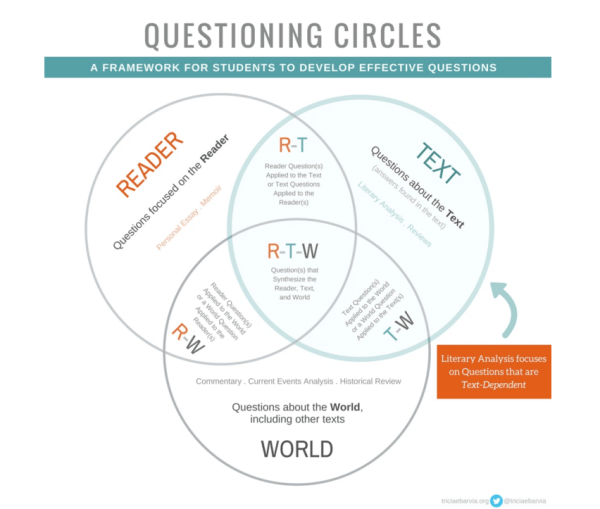I have started this post four times, and I cannot think of a pithy way to begin. You know, some clever opening, some hook to get the reader’s attention — some startling statement.
My creativity got swallowed by analysis. Well, kind of.
I figure I must be doing something wrong because my students cannot analyze to save their lives. They can talk around a text and say absolutely nothing quiet well though.
So all afternoon and into the evening I’ve thought about thinking. I’ve thought about my students’ thinking.
And I’ve determined the problem: Many of my students are not doing it.
They sit and wait, looking around the room, waiting for someone else to speak up and do the thinking for them. It’s like a Mexican standoff, and something’s gotta give.

Last week I listened to Dr. Margaret Hill talk about the importance of connections and how standards must include opportunities for students to make both efferent connections and aesthetic ones. The only way to truly learn is to make personal connections, Peg reminded me, citing Louis Rosenblatt’s Transactional Theory.
How can I provide more opportunities for students to connect to the learning?
Yesterday I read an article about mindfulness and how when it’s practiced in schools it is helping children’s well-being. Some experts say the practice of mindfulness is even an essential — a way to reduce depression, extend focus, truly learn.
How can I help students get and stay in the present?
This morning I watched the TED Talk by Shonda Rhimes “The Year I Said Yes to Everything,” and how playing again has helped her find “the hum,” the thrill and joy in her life and in her life’s work.
How can I introduce more play into my classroom?
Today in class most of my students crashed into a brick wall of higher-thinking they could not go through, over, or around. Many didn’t even try. I came home from school worn out and weary.
Then I read this post by Tricia Ebarvia, and I stalked her blog until I read the post “Steps toward an Inquiry-based Classroom,” and a missing piece walked right into my puzzle.
Tricia made me think about the on-going need for curiosity and student-generated questions. The ongoing need for purposeful and personal inquiry. She shared the chart below, citing the work of Christenbury and Kelly, NCTE, and Jeff Wilhem. And I got it.

My students do not care enough about the books they’ve chosen to read. They do not care enough about the topics they’ve chosen to write about. I haven’t been paying enough attention, or I would have realized this sooner: Choice does not necessarily mean personal connection.
I am glad I have time this year for do-overs.
It’s time to back up a few steps, so we can step into better opportunities for engagement, growth, and learning.
Maybe we’ll mediate.
Maybe we’ll play.
But we will certainly play with developing effective questions.
Tagged: AP English, Inquiry-based Learning, Readers Writers Workshop, rhetorical analysis, teacher reflection

I can’t wait to see how your conferences with kids evolve as you both talk more about your connections to those books. Love this post!! 🙂
LikeLiked by 1 person
I’m eager to hear how it goes! It’s been challenging with some of my students, especially the first time around, but I’ve seen a lot of improvement with additional practice!
LikeLiked by 1 person
My student teacher and I began planning a unit yesterday. We are going to try to get our kids curious about topics they make personal connections with, and then use the questioning circles to have them write questions again and again throughout. We think it will work as we get into deeper and better analysis, and synthesis. Fingers crossed and praying hard.
LikeLike
My student teacher and I began planning a unit yesterday. I am eager to see how it goes! Thank you!!
LikeLike